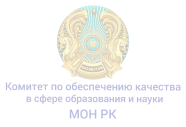THE STRUGGLE OF THE SOVIET POWER AGAINST THE MUSLIM CLERGY IN NORTHERN KAZAKHSTAN IN THE 20-30S OF THE XX CENTURY: FROM THE STATUS OF ‘DISENFRANCHISED’ TO ‘PARTICIPANTS OF COUNTER-REVOLUTIONARY ORGANIZATIONS’
DOI:
How to Cite
Abstract
The article is devoted to the methods and strategies of the struggle of the Soviet government against the Muslim clergy based on the materials of the city of Petropavlovsk and the Northern Kazakhstan region. The purpose of the article is to show the growth of repression from methods of legal discrimination in the form of classifying the Muslim clergy as "disenfranchised" to the punitive and repressive methods of the National Security Forces (NKVD), which fabricated group investigative deals on accusations of the clergy as organizers and participants in counterrevolutionary organizations for overthrowing Soviet power. The main research method was the method of historical reconstruction, the source base of the research was archive materials of the investigative deals of rehabilitated Muslim priests.
The Muslim clergy of Petropavlovsk and the Northern Kazakhstan region were active subjects of the religious and social life of the region with their own vision of social development, which did not correlate with the projects of a radical transformation of world by the Bolsheviks, where there was no place for religion. The anti-religious policy of the Soviet government included a set of propaganda, discriminatory and punitive-repressive measures aimed at undermining the influence of the clergy in society and, as a result, at its physical destruction. In the course of the intensification of repressions, the Muslim clergy acted not only as objects of a repressive policy, but also, while retaining their subjectivity, built strategies for protecting religion both through legal instruments in the form of official appeals to the authorities, and through the practice of “illegal mosques”, “underground mullahs”, “itinerant mullahs”. The author believes that the political rehabilitation of the Muslim clergy should include the restoration of the subjectivity of Muslim clergy, which is expressed in the reveal of their names, the reconstruction of their biographies, the defense strategies which they use, and the recovery of their discourses about Soviet power.
Keywords: Muslim clergy, “disenfranchised”, legal discrimination, punitive and repressive methods, counter-revolutionary organization, defense strategies








